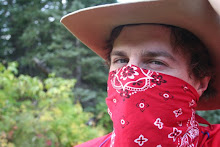El Salar de Atacama
Why not top an amazing sunset by heading to the world´s third largest salt flat, only trailing Bolivia´s Salar de Uyuni and Utah´s Great Salt Lake desert?
El Salar de Atacama is hard to navigate for several reasons:
-Its unique formation is made up of so many minerals that large crystals are produced as the salt water lake slowly evaporates, making it drastically different from the salt flats of Bolivia and Utah. the structures grow about 1 mm every year, boasting as much as 3 feet of jagged, multi-colored pillars in some areas.
-El Salar is located in the middle of Parque Nacional Los Flamencos, meaning that it is one of the main breeding areas in the world for 3 of the world´s 4 flamingo species. Since they are highly protected, it is impossible to go into many sections of the salt lake.

The salt lake is a massive area (over 1,000 square miles) formed from Andean runoff waters being stuck with no place to go. The problem for the water is that there are two other mountain ranges making it impossible for any escape. The underground runoff eventually comes to the surface as it sits and evaporates, bringing with it salt left behind form when the entire area was a massive lake millions of years ago. The other minerals are brought down from the mountains and give the salar it´s unique rugged surface.

Flamingos eat a crustacea that is only found in highly salinated waters. The crustacea gives flamingos their pink color. So the older the flamingo, the more it has eaten, and the pinker it is. Younger ones, which is what we mainly saw, are pretty much white.

From the salt lake we made our way up into the Andes, stopping at several small towns and eventually making our way to Laguna Miscanti and its smaller neighbor, Laguna Miñeques. The lakes are above 14,000 feet and awe-inspiring. During the mating season in August and September, the lakes are filled with thousands of flamingos. We saw none. The only rain that the lakes get is from El Invierno Boliviano, or the Bolivian Winter, which happens to be in the middle of summer, when we were there. Bolivia receives a lot of rain, but the lakes and the Atacama simply receive enough to stay at roughly the same level year to year.

Miscanti above. One of many desert cemeteries below. They have an interesting tradition of putting wreaths on crosses every November, but the wind then makes the wreaths into creepy fragments of what once was.



0 Comments:
Post a Comment
<< Home